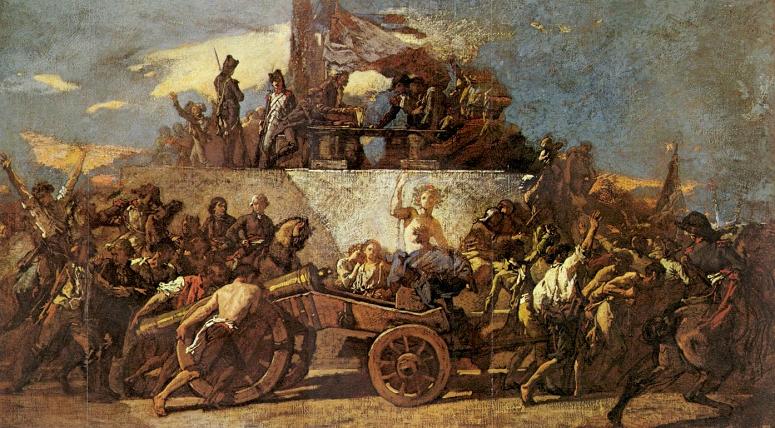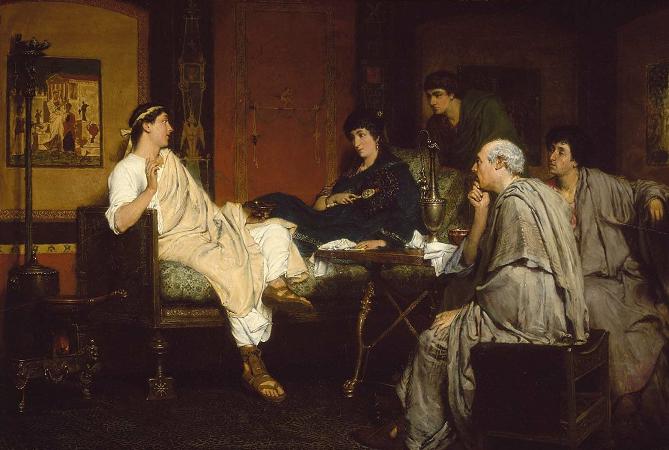Academicism Painting. Academic art, or academicism or academism, is a style of painting, sculpture, and architecture produced under the influence of European academies of art. Specifically, academic art is the art and artists influenced by the standards of the French Académie des Beaux-Arts, which was practiced under the movements of Neoclassicism and Romanticism, and the art that followed these two movements in the attempt to synthesize both of their styles, and which is best reflected by the paintings of William-Adolphe Bouguereau, Thomas Couture, and Hans Makart. In this context it is often called academism, academicism, art pompier, and eclecticism, and sometimes linked with historicism and syncretism. The first academy of art was founded in Florence in Italy by Cosimo I de' Medici, on 13 January 1563, under the influence of the architect Giorgio Vasari who called it the Accademia e Compagnia delle Arti del Disegno as it was divided in two different operative branches. While the Company was a kind of corporation which every working artist in Tuscany could join, the Academy comprised only the most eminent artistic personalities of Cosimo's court, and had the task of supervising the whole artistic production of the Medicean state. In this Medicean institution students learned the arti del disegno and heard lectures on anatomy and geometry. Another academy, the Accademia di San Luca, was founded about a decade later in Rome. The Accademia di San Luca served an educational function and was more concerned with art theory than the Florentine one. In 1582 Annibale Carracci opened his very influential Academy of Desiderosi in Bologna without official support; in some ways this was more like a traditional artist's workshop, but that he felt the need to label it as an academy demonstrates the attraction of the idea at the time. Accademia di San Luca later served as the model for the Académie royale de peinture et de sculpture founded in France in 1648, and which later became the Académie des beaux-arts. The Académie royale de peinture et de sculpture was founded in an effort to distinguish artists who were gentlemen practicing a liberal art from craftsmen, who were engaged in manual labor. This emphasis on the intellectual component of artmaking had a considerable impact on the subjects and styles of academic art. After the Académie royale de peinture et de sculpture was reorganized in 1661 by Louis XIV whose aim was to control all the artistic activity in France, a controversy occurred among the members that dominated artistic attitudes for the rest of the century. This battle of styles was a conflict over whether Peter Paul Rubens or Nicolas Poussin was a suitable model to follow. Followers of Poussin, called poussinistes, argued that line should dominate art, because of its appeal to the intellect, while followers of Rubens, called rubenistes, argued that color should dominate art, because of its appeal to emotion. The debate was revived in the early 19th century, under the movements of Neoclassicism typified by the artwork of Jean Auguste Dominique Ingres, and Romanticism typified by the artwork of Eugène Delacroix. Debates also occurred over whether it was better to learn art by looking at nature, or to learn by looking at the artistic masters of the past. Academies using the French model formed throughout Europe, and imitated the teachings and styles of the French Académie. In England, this was the Royal Academy. The Royal Danish Academy of Fine Arts founded in 1754, may be taken as a successful example in a smaller country, which achieved its aim of producing a national school and reducing the reliance on imported artists. The painters of the Danish Golden Age of roughly 1800-1850 were nearly all trained there, and many returned to teach and the history of the art of Denmark is much less marked by tension between academic art and other styles than is the case in other countries. One effect of the move to academies was to make training more difficult for women artists, who were excluded from most academies until the last half of the 19th century. This was partly because of concerns over the impropriety presented by nudity. Special arrangements were often made for female students until the 20th century. Since the onset of the Poussiniste-Rubeniste debate, many artists worked between the two styles. In the 19th century, in the revived form of the debate, the attention and the aims of the art world became to synthesize the line of Neoclassicism with the color of Romanticism.
more...














